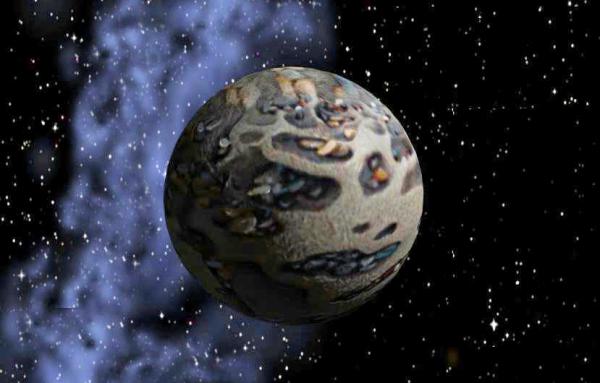BY LETTER
Raksha
A weird moon with alien ruins | |
 Image from Steve Bowers | |
| Within the caves and hollows of this strange moon are many full-sized asteroids of many types, apparently collected by the extinct species HIE072CZE | |
The moon is 700 km in diameter, and mostly composed of pure nickel-iron. The outer surface has been polished smooth, but has numerous cavities both on and beneath the surface. Almost all of the cavities have one or more complete asteroids located inside, arranged at various angles within voids and cavities. Several different types of asteroid are collected inside the moon, totaling more than four hundred objects each at least two kilometers in length.
This collection of asteroids does not appear to have been the result of a natural process. Among the caverns and cavities of this moon the survey team found traces of the vanished slime-mold-like xenosophont race known as HIE072CZE; a few tracks and tools, and waste products from a crystal farm. Could these long-lost aliens have built Raksha as an asteroid museum, or a shrine to these apparently venerated objects? None of the rocks within the moon show any trace of mining, even though the HIE072CZE are known to have exploited asteroids extensively, especially for the rarer minerals within.
Some xenoarchaeologists suggest that the whole moon is a message, with the pattern of rocks and cavities having a significance which may give some clue as to the nature of the disaster that befell this ancient race. Species HIE072CZE is known to have arranged minerals and crystals into decorative patterns elsewhere, but could this particular arrangement have a greater significance, such as a warning? Certainly the arrangement of these objects does not appear to be totally random, but as no examples of HIE072CZE language have survived, the message (if any) defies interpretation.
Related Articles
Appears in Topics
Development Notes
Text by Steve Bowers
Initially published on 18 April 2011.
Initially published on 18 April 2011.






